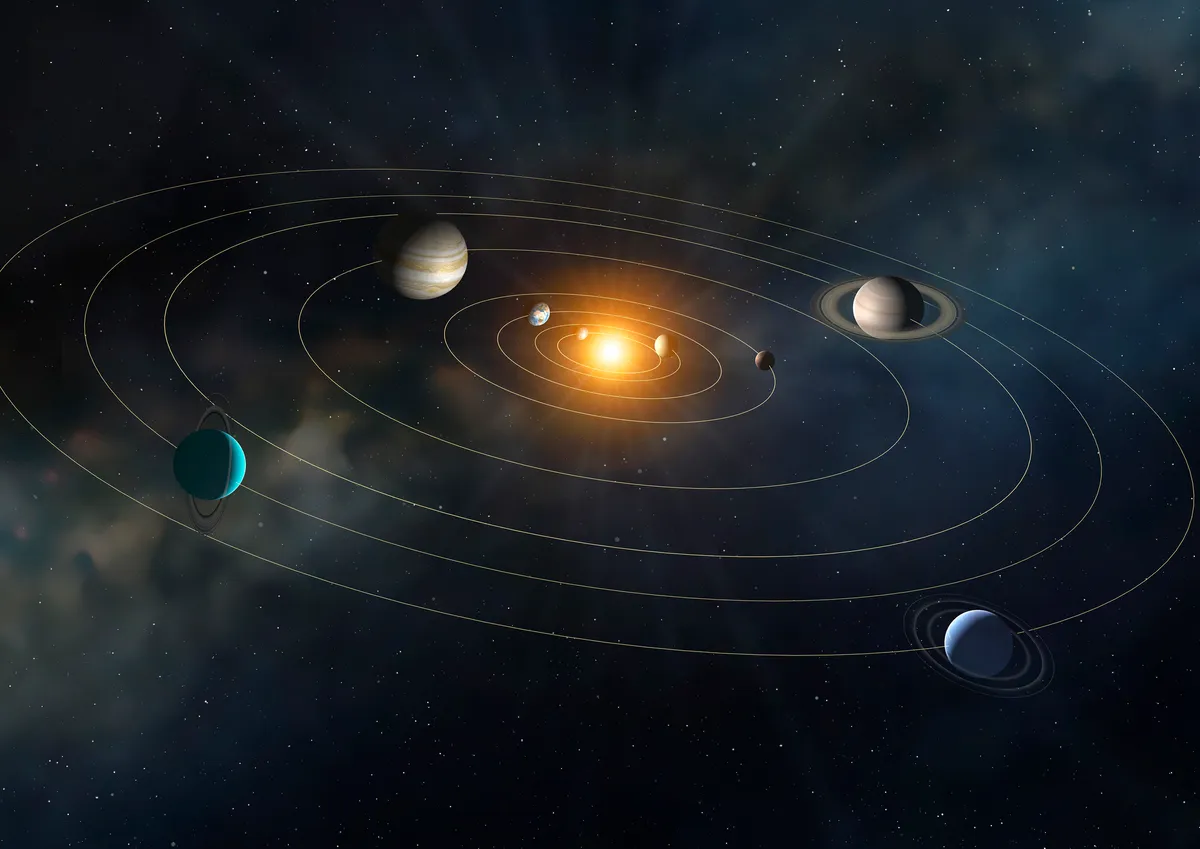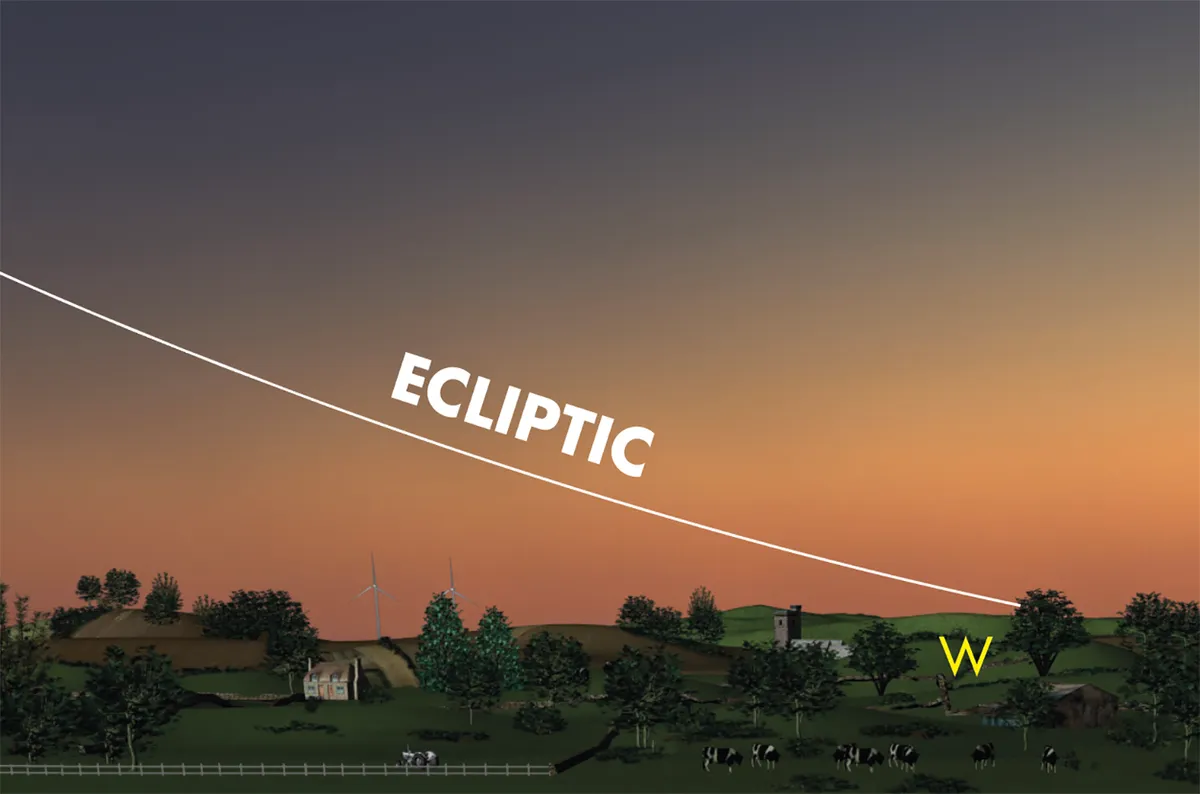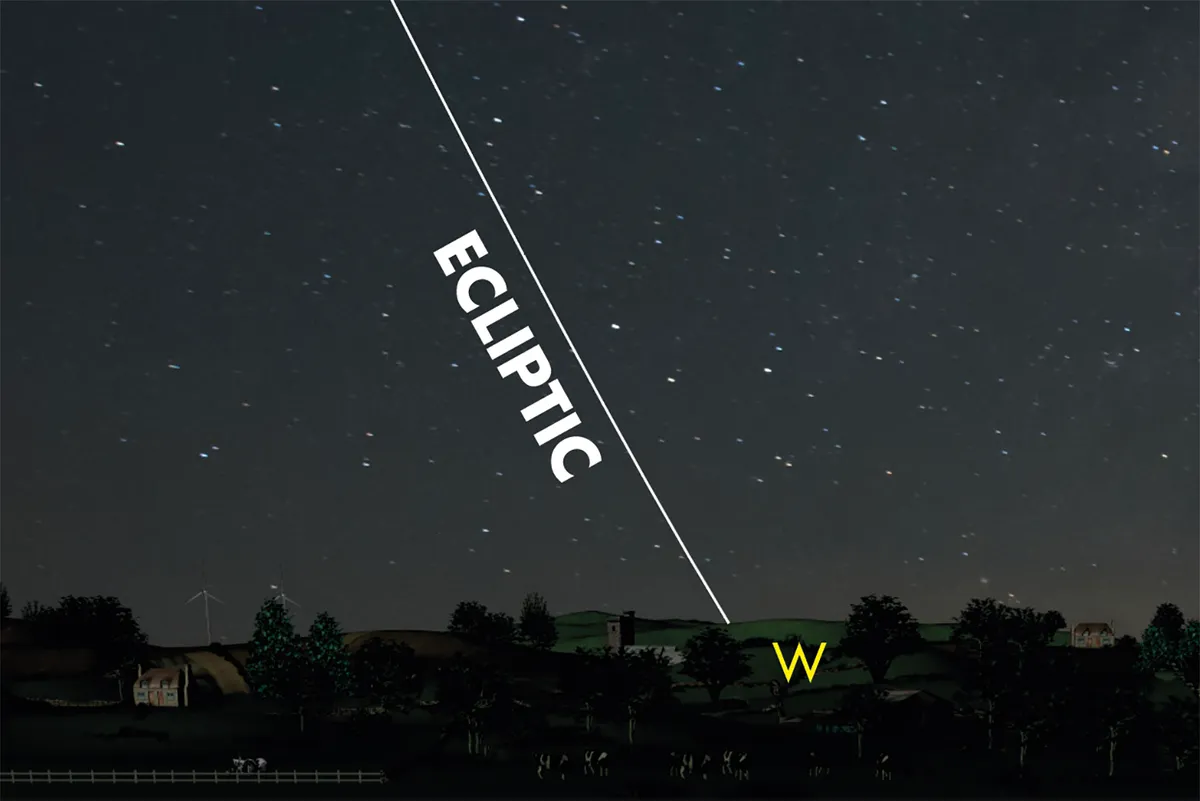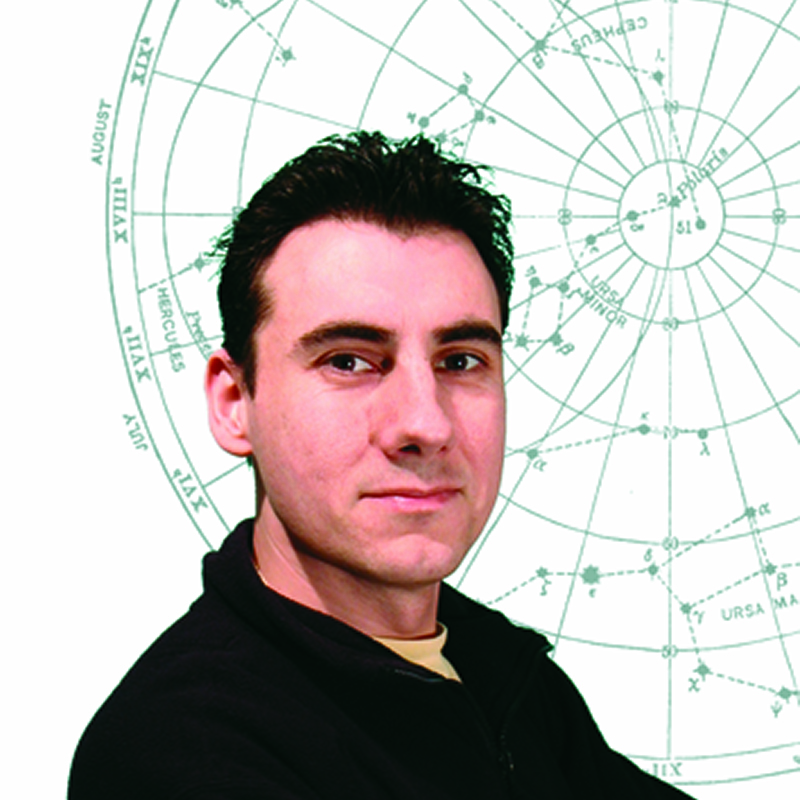Along with the celestial equator, the ecliptic is one of two important lines that astronomers use to divide up the night sky. From our planet, it looks as though the Sun moves around us over the course of a year. As we know, this isn’t really the case: instead Earth orbits the Sun.
As do all the other planets in the Solar System. But this illusion forms one of the most important markers on the sky, the line we call the ecliptic.
The ecliptic is the invisible path that the Sun traces as it moves around the sky.
Think of it like this: if the Sun were to drop breadcrumbs behind it like a cosmic Hansel and Gretel, this is the trail it would leave behind. The Sun can always be found on the ecliptic – it never deviates from it. But it also represents something else: the orbital plane of our planet.
Read more:
- What causes a meteor shower?
- Why can we see the Moon during the day?
- Trace the Sun's path with a pinhole camera
All of the planets in the Solar System occupy orbital planes similar to our own. This is because when the Solar System formed, billions of years ago, dust and gas surrounding our nascent star was pulled into a disc under the influence of gravity.
The planets we know today all formed within this disc and hence they all occupy planes similar to the ecliptic. In plain terms, when the planets are visible, they will always be near to this line (as in the image at the top of this page). For more on this, read our guide on how to find the planets in the night sky.
It’s this ‘coplanar’ nature of the Sun and planets that allows many of the events that captivate astronomers to occur so often. When our Moon and the Sun line up, we see an eclipse.
When a planet appears to be in the same region of sky as another, or our own Moon, we call it a conjunction. Even seemingly rare events such as a transit of Venus, are really quite frequent in cosmological terms.

What causes the seasons?
If you look at a star chart, you may notice a second important line crossing the constellations, the celestial equator. This is simply a projection of Earth’s terrestrial equator into space.
The celestial equator sits at an angle of 23.5° to the ecliptic: a result of Earth’s axial tilt. Using these two lines, we can make sense of the astronomical points that mark the start of the seasons.
The points where the two lines meet mark the equinoxes, when day and night are the same length. In the northern hemisphere, the equinox in mid-March heralds spring, the one in mid-September the beginning of autumn. At these two points in its orbit, Earth has no tilt relative to the Sun.
From the March equinox, the days slowly lengthen until mid-June, when Earth reaches the point in its orbit where it is at its greatest tilt relative to the Sun – a solstice.
This is both the first day of summer and the longest day of the year. At this point, the ecliptic and the celestial equator are at their farthest apart.
There’s another solstice six months later in mid-December, when the tilt of the poles is completely reversed in relation to the Sun. In the northern hemisphere, this marks the start of winter and is also the shortest day.

How to find the ecliptic throughout the year
The Sun always sits on the ecliptic, so it’s easy to work out where the line is on any clear day. Looking at the whole year, we know that the Sun – and hence the ecliptic – is higher in the sky through the day in the summer months and lower during the winter.
But what about at night? If you can work out where the ecliptic traces across the sky after darkness falls, you can work out where you might spot a planet.
Spring
The ecliptic sits low down in the morning, but in the evening it stretches high across the sky from east to west, making the dusk skies the best time to see Mercury and Venus, as they never stray far from the Sun.
Summer
In summer the ecliptic sits at a low elevation by dusk, so any planets are mired in the atmospheric murk. The ecliptic’s orientation swings from northwest-southeast in the evening to northeast-southwest in the morning.

Autumn
In a reflection of the northern hemisphere spring, the ecliptic’s evening path is now low down, but in the morning it stretches high across the sky from east to west. This makes the dawn skies the best time to see Mercury and Venus.
Winter
The ecliptic path in winter is quite high when it’s dark, and moves higher until it reaches maximum elevation at midnight. This is a great time for observing planets, as you’re able to look at them though less atmosphere.

Planet oppositions
Oppositions, another result of the Solar System being coplanar, occur when the Sun, Earth and another planet form a line, with Earth in the middle.
From our perspective, the planet is in the opposite position in the sky from our star. As such, only the superior planets – those with
orbits farther out from the Sun than Earth’s – reach opposition.
When a planet is at opposition it is usually at its closest to Earth and therefore appears larger than at any other time during its apparition. Due to its position relative to the Sun, a planet can be brighter than usual too.
For more on this, read our guide What is opposition in astronomy?
This article originally appeared in the March 2013 issue of BBC Sky at Night Magazine.
